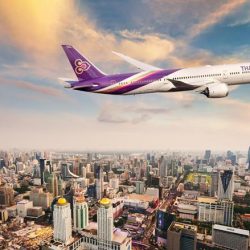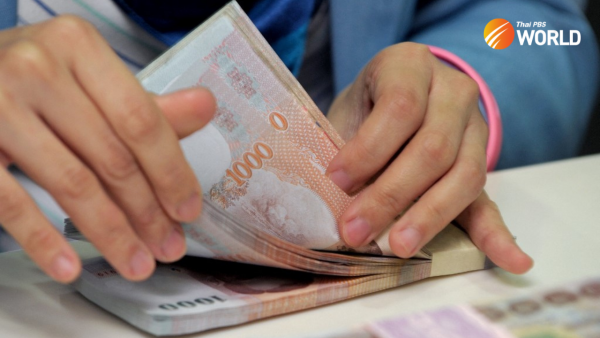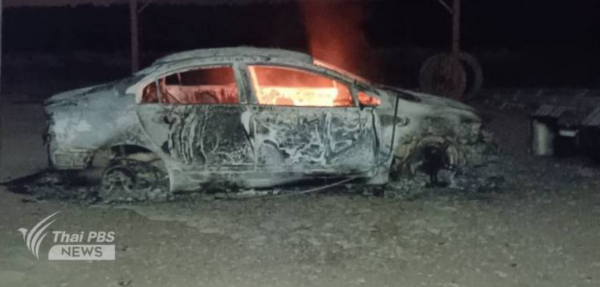Thai Air Force faces a choice between F-16 and Gripen to replace aging fleet

The Royal Thai Air Force plans to acquire 12 new fighter jets — either the US F-16 or the Swedish Gripen — to replace an aging fleet in the coming years after failing last year to procure its No. 1 choice: the most advanced US F-35.
The acquisition plan would be released when the Air Force issues a White Paper on its long-term air defense strategy at the end of February, according to Air Chief Marshal Punpakdee Pattanakul, the commander-in-chief of the Air Force.
The Air Force would consider aircraft efficiency and capacity, the appropriateness and budget-worthiness of the warplane for hardware procurement, he said, adding that the public would be given a proper explanation.
The budget outlay for the acquisition plan has not been disclosed yet, but it was expected that the Air Force would initially request at least 19 billion baht from the government for the first batch of fighter jets.
Due to budget constraints and the economic downturn, the Air Force is dividing its procurement plan into three phases over 12 years, acquiring four jets in each phase. The order for the first batch would be placed in fiscal year 2025 and the jets could be delivered by 2028. The order for another four planes in the second phase would be placed in fiscal 2029. The final batch of four fighter jets to complete its fleet are expected by 2037, according to a senior Air Force official, who spoke anonymously.
Aging fleet
The Thai Air Force currently operates five types of fighter jets, some of which were operated during the Cold War since the 1970s. The fleet includes Alpha Jet, F-5, F-16 OCU (Operational Capability Upgrade), F-16 MLU (Mid-Life Upgrade), and Gripen.
The oldest F-5 has been in service since 1978 and will be decommissioned in 2030, together with the German-made Alpha Jet, which has been in service since 2000.
The US-made F-16 fighters were commissioned in 2002, 2003 and 2004. Two fleets of F-16 OCU and MLU are now being operated at two major air bases in the Northern Nakhon Sawan and Northeastern Nakhon Ratchasima provinces. The Air Force plans to decommission the F-16 OCU in 2028 and the F-16 MLU in 2032.
The Air Force has operated the fleet of 12 Swedish-made Gripen jets at the Surat Thani air base since 2011 to cover the Southern part of Thailand. One of them crashed in January 2017 during a show on National Children’s Day in Songkhla province. The jets would be retired from service by 2032.
The Air Force expects the proposed new fighter jets to be in service when the aging warplanes are eased out. It also needs to train at least 24 pilots and technicians for the new fleet of 12 jets.
As the jets in the Thai fleet operate for a long span of years and technological developments are rapid, the Air Force initially aimed to acquire the most advanced fighter jets, such as the US-made F-35A, to have state of the art technology.
The US, however, rejected the proposal to acquire the fifth-generation fighter jets last year, citing Thailand’s lack of readiness for the most sophisticated military aviation technology.
The US suggested that the Air Force consider purchasing the older generation F-15s or F-16s commensurate with its capacity and readiness. The Thais preferred something between the fourth and fifth generations of military aviation technology.
Gripen vs F-16
A senior Air Force official said that experts and working groups were now studying various types of warplanes from different manufacturers, but with the F-16 or Gripen in mind as they were familiar with the two . “With the current budget, we can afford both types of fighter jets,” he said.
The latest version of the F-16 Block 70/72 manufactured by the US-based Lockheed Martin costs US$ 63 million per unit, while the JAS 39 Gripen E made by Saab of Sweden costs US$ 85 million a unit, according to the AeroTimes website. The price will vary, depending on internal and weaponry configurations and customization.
Relations with the two countries would also be taken into consideration, the official said. Thailand is a long-time treaty ally of the US, while Bangkok also has a good relationship with Sweden.
The Air Force has guaranteed that the procurement system is transparent enough for Parliament and the public to examine. If the F-16 is chosen, the purchase must go through the US Foreign Military Sale. In the case of the Gripen, the acquisition must be arranged under a government-to-government agreement, the official said.
Air Force chief Punpakdee and his delegation are planning a visit to a Saab factory in Sweden in May but there are no plans to visit Lockheed Martin, according to a security source.
However, the Thai Air Force gave importance also to operational independence, notably the data-link system for communication, he said. The US does not allow any party to modify or adjust its data-link system used in military operations, whereas the Thai Air Force jointly developed a data-link system with Saab for Gripen a long time ago. The jointly developed data-link system, known locally as Link-T, enabled the Gripen jets to communicate with four Thai Navy warships: HTMS Chakri Naruebet, HTMS Bhumibol Adulyadet, HTMS Taksin, and HTMS Naresuan.
Meanwhile, the US data-link system for the F-5 and F-16 are likely operated independently. The American system could not be integrated with the homegrown Link-T or any other data link system as the US was wary of its technology and military secrets being leaked, a Thai Air Force official said.
Regional implications
The Thai plan to procure new aircraft is unlikely to impact the regional balance of air power as the new fighter jets are mainly a substitute in an aging fleet.
Singapore is the only neighboring Southeast Asian country that has acquired the most advanced F-35 fighter jets. The city-state has a far bigger fleet than Thailand with 100 F-15 and F-16 multirole fighter jets.
Myanmar, which the Thai Air Force regards as a friendly country despite some intrusions into Thai air space, mostly operated MiG 29 and obtained the first two SU-30s from Russia late last year as part of a contract for six signed in 2018.
Vietnam, which the Thai military considers a competitor, has 80 jets comprising 35 of Russian-made SU-30, 34 of the SU-22, and 11 of the SU-27. Hanoi pays attention mostly to tensions in the contentious South China Sea and has expressed concerns over China’s military strength.
Malaysia has 39 Russian-made multirole fighter SU-30s, F/A 18 (Hornet), and UK-made Hawk 208. Last year, the Malaysian Air Force ordered 18 FA-50s from Korean Aerospace Industries, whose delivery of the light combat aircraft would begin by 2026.
Cambodia and Laos, which experienced border clashes with Thailand, have no significant air power.
By Thai PBS World’s Political Desk






